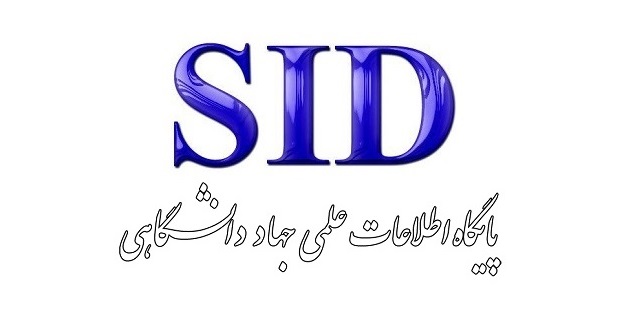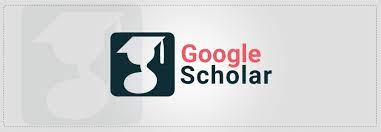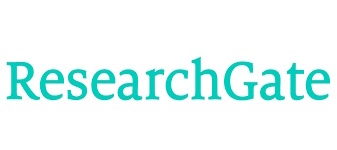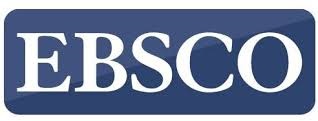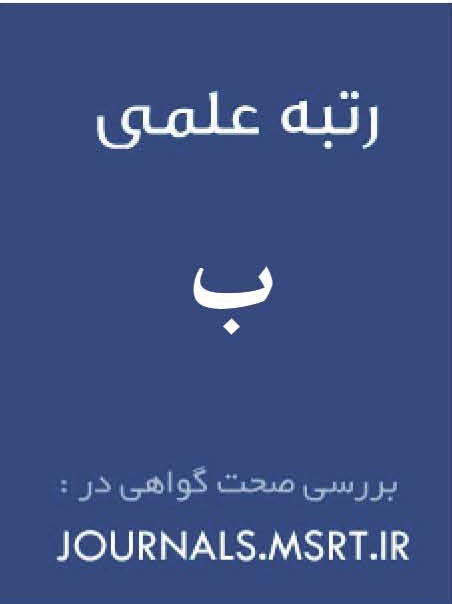Audit Risk Prediction Based on Long Short-Term Memory (LSTM) Algorithm
Keywords:
Audit risk prediction, deep learning, ong short-term memory algorithmAbstract
The objective of the present study is to predict audit risk using the Long Short-Term Memory (LSTM) algorithm in companies listed on the Tehran Stock Exchange and to compare its results with those of other deep learning algorithms. To achieve this objective, a total of 1,650 firm-year observations (150 companies over 11 years) were collected from the annual financial reports of companies listed on the Tehran Stock Exchange during the period from 2013 to 2023. In this study, four deep learning algorithms—including Long Short-Term Memory (LSTM), Support Vector Machine (SVM), Convolutional Neural Network (CNN), and Recurrent Neural Network (RNN)—were utilized. Additionally, to select the final research variables for model construction, the two-sample mean comparison test method was applied. The results of the deep learning algorithms show that the overall accuracy of the LSTM, SVM, CNN, and RNN algorithms was 99.1%, 89.6%, 85.8%, and 96.4%, respectively, indicating that the LSTM algorithm has the best performance and the CNN algorithm the poorest performance in predicting audit risk. In other words, the results demonstrate the superior efficiency of the Long Short-Term Memory (LSTM) algorithm compared to other deep learning algorithms. Therefore, in companies listed on the Tehran Stock Exchange, the LSTM algorithm provides the most efficient model for audit risk prediction. The findings of this study can offer useful insights into enhancing the prediction of audit risk and minimizing errors in evaluating financial statement information, improving the assessment of audit evidence based on data, and facilitating auditors’ ability to issue more reality-based opinions.
Downloads
References
Al-Din, S., Al-Hayik, Y., & Abu-Naser, S. S. (2023). Neural Network-Based Audit Risk Prediction: A Comprehensive Study. International Journal of Academic Engineering Research (IJAER), 7(10), 43-51.
Bagheri, M., & Lotfallian, M. (2024). Examining the Impact of Financial and Operational Risks on Audit Quality in Companies Listed on the Tehran Stock Exchange. 7th International Conference on Innovative Ideas in Management, Economics, Accounting, and Banking, https://civilica.com/doc/2023922/
Cohen, J., Krishnamoorthy, G., & Wright, A. (2010). Corporate governance in the post‐Sarbanes‐ Oxley era: Auditors' experiences. Contemporary Accounting ResearchVL - 27(3), 751-786. https://doi.org/10.1111/j.1911-3846.2010.01026.x
Cohen, J. R., Hoitash, U., Krishnamoorthy, G., & Wright, A. M. (2014). The effect of audit committee industry expertise on monitoring the financial reporting process. The Accounting Review, 89(1), 243-273. https://doi.org/10.2308/accr-50585
Darabi, R., Alizadeh Pirali, F., & Dabestani, M. (2020). A Review of Theoretical and Empirical Literature on the Impact of Macroeconomic Conditions on Audit Risk. Accounting and Management Perspectives, 3(37), 12-18.
DeFond, M., & Zhang, J. (2014). A review of archival auditing research. Journal of Accounting and Economics, 58(2), 275-326. https://doi.org/10.1016/j.jacceco.2014.09.002
Deng, M., Lu, T., & Wen, X. (2023). Does Audit Risk Disclosure Improve or Impair Audit Quality and Investment Efficiency? https://doi.org/10.2139/ssrn.4540951
Engel, E., Hayes, R. M., & Wang, X. (2010). Audit committee compensation and the demand for monitoring of the financial reporting process. Journal of Accounting and Economics, 49(1-2), 136-154. https://doi.org/10.1016/j.jacceco.2009.08.001
Faridi Mayvan, M., Momeni, A., & Moghadam, A. (2022). Testing Audit Risk Assessment Under the Influence of Corporate Social Responsibility Disclosure. Accounting and Management Auditing Knowledge, 11(43), 309-321.
Gholami, H., & Dashtbani, G. (2021). Examining the Relationship Between Audit Quality and Audit Risk in Companies Listed on the Tehran Stock Exchange. Accounting and Management PerspectivesVL - 4(49), 122-135.
Hammersley, J. S., Johnstone, K., & Kadous, K. (2011). How do audit seniors respond to heightened fraud risk? Auditing: A Journal of Practice & Theory, 30IS - 3, 81-101. https://doi.org/10.2308/ajpt-10110
Hamti, D., Arab-Salehi, M., & Tolouei Ashlaghi, A. (2020). Audit Risk Assessment Using a Data Mining Approach (Case Study: Bank Loans). Accounting and Management Auditing Knowledge, 9(34), 157-167.
Hamti, D., & Tolouei Ashlaghi, A. (2022). Audit Risk Assessment Using a Data Mining Approach Based on Neural Networks in Companies Listed on the Tehran Stock Exchange. Auditing Knowledge, 5(89), 216-245.
Heydinejad, G., Jamshidi Navid, B., & Ghanbari, M. (2021). The Relationship Between Audit Committee Effectiveness and Audit Risk. Accounting and Auditing Research, 13(52), 185-206.
International, A., & Assurance Standards, B. (2011). Audit quality. An IAASB perspective. http://www.ifac.org/sites/default/files/publications/files/audit-quality-an-iaasb-per.pdf
International Organization of Securities, C. (2009). Consultation report on transparency of firms that audit public companies. http://www.iosco.org/library/pubdocs/pdf/IOSCOPD302.pdf
Kim, J. B., Lee, J. J., & Park, J. C. (2015). Audit quality and the market value of cash holdings: The case of office-level auditor industry specialization. Auditing: A Journal of Practice & Theory, 34(2), 27-57. https://doi.org/10.2308/ajpt-50903
Krishnan, G. V., & Visvanathan, G. (2009). Do auditors price audit committee’s expertise? The case of accounting versus nonaccounting financial experts. Journal of Accounting, Auditing & Finance, 24(1), 115-144. https://doi.org/10.1177/0148558X0902400107
Krishnan, J., Li, C., & Wang, Q. (2013). Auditor industry expertise and cost of equity. Accounting Horizons, 27(4), 667-691DO - 610.2308/acch-50513.
Kurt, A. C. (2022). Audit Risk and the Benefits of Employing Specialist Auditors: Evidence from Firms with Major Government Customers. https://doi.org/10.2139/ssrn.4199751
Nurmawanti, S., Lenggogeni, L., & Yanti, H. B. (2024). The Effect of Competence, Time Budget Pressure and Professional Attitudes of Auditors on Internal Audit Quality With Role Conflict As a Moderating Variable. Dinasti International Journal of Economics, Finance & Accounting (DIJEFA), 4(6).
O. Abu-Mehsen, D., Abu Nasser, M. S., Hasaballah, M. A., & Abu-Naser, S. S. (2023). Predicting Audit Risk Using Neural Networks: An In-depth Analysis. International Journal of Academic Information Systems Research (IJAISR), 7(10), 48-56.
Porcuna-Enguix, L., Bustos-Contell, E., Serrano-Madrid, J., Labatut-Serer, G., & Public Company Accounting Oversight, B. (2021). Constructing the Audit Risk Assessment by the Audit Team Leader When Planning: Using Fuzzy Theory The process for Board determinations regarding firms’ efforts to address quality control criticisms in inspection reports. Mathematics, 9(23), 3065. https://doi.org/10.3390/math9233065
Public Company Accounting Oversight, B. (2010). Consideration of registration applications from public accounting firms in Non-U.S. jurisdictions where there are unresolved obstacles to PCAOB inspections.
Robin, A., & Wu, Q. A. U. Z. H. (2017). Auditor quality and debt covenants. Contemporary Accounting Research, 34(1), 154-185. https://doi.org/10.1111/1911-3846.12243
Robin, A. J., & Zhang, H. (2015). Do industry-specialist auditors influence stock price crash risk? Auditing: A Journal of Practice & Theory, 34(3), 47-79. https://doi.org/10.2308/ajpt-50950
Sujana, E., & Dharmawan, N. A. S. (2023). Audit Quality Improvement and the Role of Risk: Audit as a Moderator. AABFJ, 17(4), 223-238. https://doi.org/10.14453/aabfj.v17i4.14
Wu, Y., & Wilson, M. P. (2016). Audit quality and analyst forecast accuracy: The impact of forecast horizon and other modeling choices. Auditing: A Journal of Practice & Theory, 35(2), 167-185. https://doi.org/10.2308/ajpt-51216
Yarifard, R., & Hashemi, N. (2024). The Impact of Corporate Social Responsibility Reporting on Firm Value Considering the Role of Audit Quality, Corporate Governance, and Earnings Management in Companies Listed on the Tehran Stock Exchange. Accounting and Management Outlook, 7IS - 94, 1-27.
Zaraeian, H., & Hejazi, M. (2023). Presenting a Tax Audit Risk Model in the Comprehensive Tax Plan Using a Combined ISM-ANP Approach. Empirical Accounting Research, 13(1), 61-80.
Downloads
Published
Submitted
Revised
Accepted
Issue
Section
License
Copyright (c) 2024 رشا محمود علي, حمیدرضا عزیزی, سراج رزوقی عباس, رحمان ساعدی (نویسنده)

This work is licensed under a Creative Commons Attribution-NonCommercial 4.0 International License.



